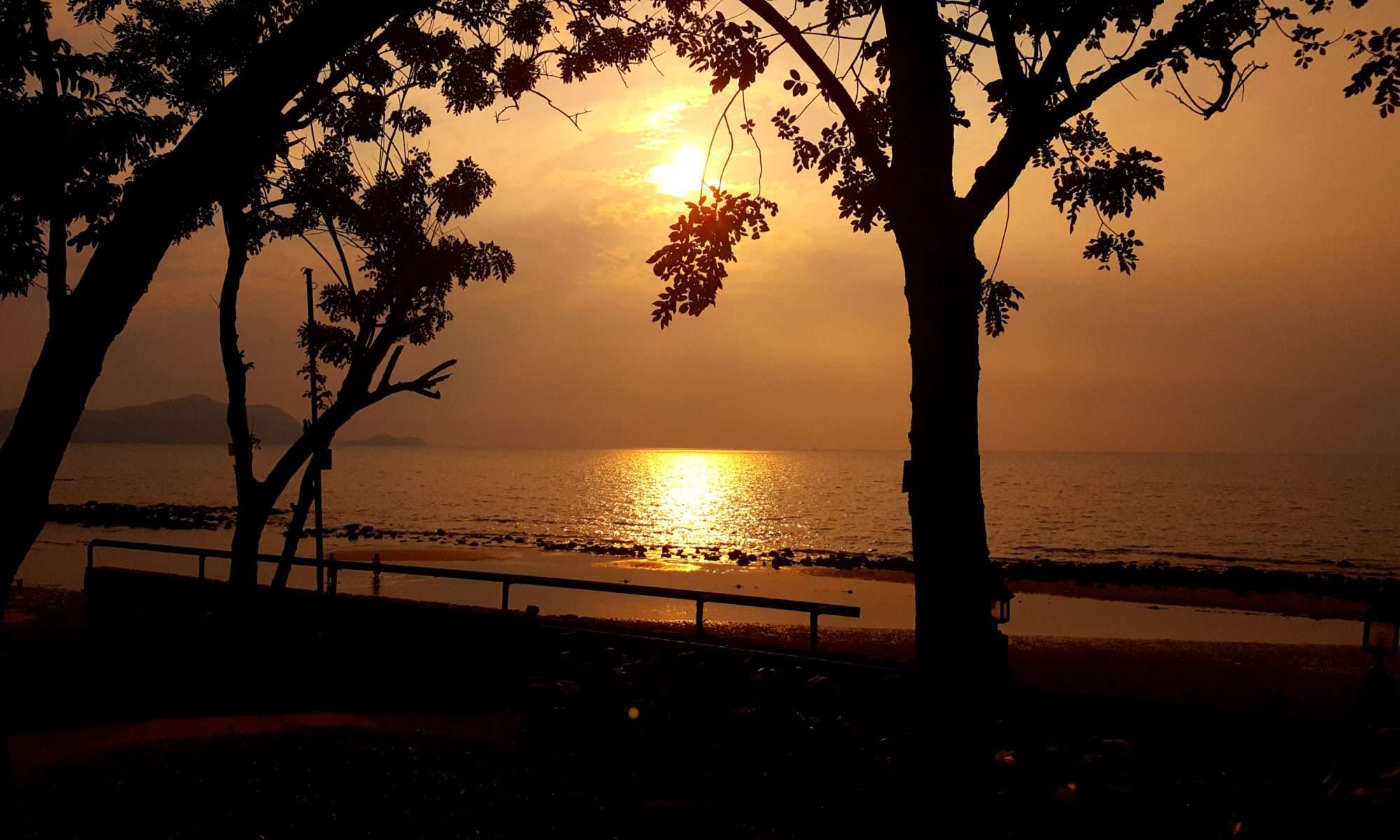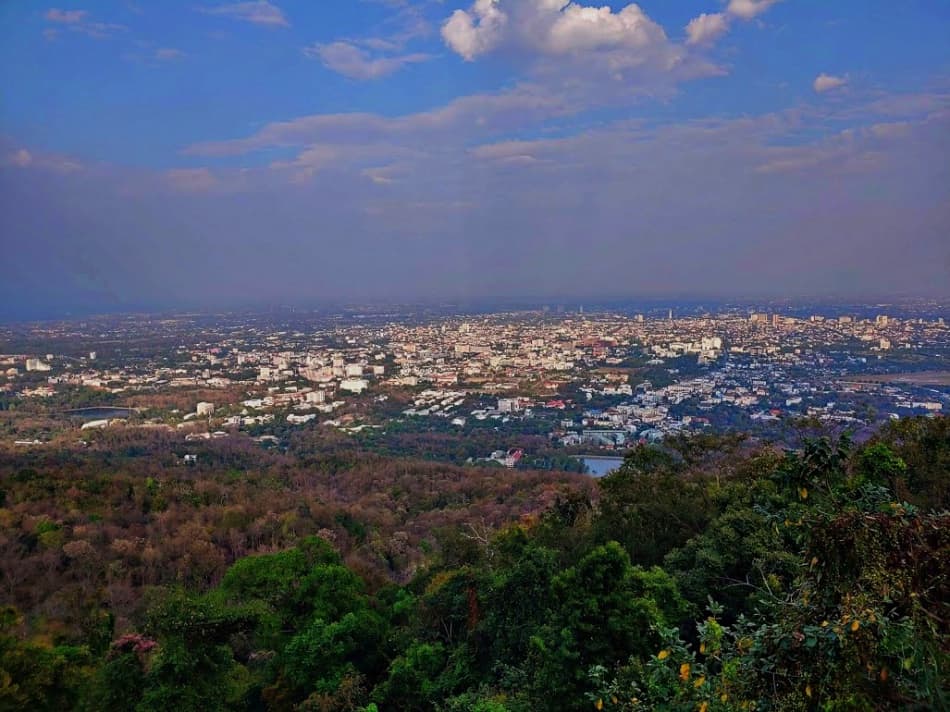
My wife Thanya grew up in Chiang Mai and got her degree at Chiang Mai university. She then went to live and work in Bangkok and hadn’t been back to Chiang Mai for several years. So, this last visit to Thailand, we decided to add the northern city of Thanya’s childhood, “Chiang Mai” to our itinerary.
Is three days enough time in Chiang Mai?
Yes it is if you know what to do and see. We only had enough time to spend three days and nights there. So, for this reason I will share my tips to make the best of a three day itinerary in Chiang Mai.
Although you could spend weeks exploring all that Chiang Mai has to offer, we broke it down to some activities and sites that have left us with some of the best memories we could ask for.
Be forewarned that you will be longing to revisit this laid back, charming city again and again and again!
A little about Chiang Mai.
Known as the “Rose of the North”, the city of Chiang Mai meaning “New City” was so named because it became the new capital of Lan Na when it was founded in 1296, succeeding Chiang Rai, the former capital founded in 1262. The cities history can be traced back more than 700 years, making it one of the most historic cities in Thailand.
Chiang Mai is the largest city in northern Thailand and is around 687 km (427 miles) north of Bangkok. Nestled among the rolling green mountains of northern Thailand, the climate here is a little cooler and can even get a little chilly at night. You can take in the natural beauty of the highest mountains in Thailand or the large plains around the Ping River.
Chiang Mai was on TripAdvisor’s 2014 list of 25 best destinations in the world and it now stands at number 24. In December 2017, Chiang Mai was awarded the UNESCO(United Nations, Scientific and Cultural Organization) title of Creative City. UNESCO seeks to build peace through international cooperation in Education, the Sciences and Culture.
Getting to Chiang Mai.
Flying to Chiang Mai.
Typically, most travelers to Thailand will start their journey from the capital city of Bangkok. Bangkok is home to Suvarnabhumi International Airport which is the main airport in Thailand. Although you can fly to Chiang Mai from Suvarnabhumi, it seems to be around $20 higher for round trip fair, than it is from Don Muang International Airport.

Most airlines flying between Bangkok and Chiang Mai are low cost airlines operating from Don Muang Airport. Air Asia, Thai Lion Air and Nok Air have several flights a day, seven days a week from Don Muang.
The average cost will be around 1,000 THB all the way up to 5,000 THB or $30-$160 round trip, depending on high tourist season and or public holidays like Songkran (Thai new year).
Your flight will be short at around 60-75 minutes and you will arrive at Chiang Mai International Airport, which is just outside the city center. If you aren’t renting a car or your hotel doesn’t provide airport service, you can take a legal taxi for 150 THB or $5 and they will take you anywhere in the city.
Taking a Train to Chiang Mai.
There are 5 direct trains a day from Bangkok to Chiang Mai. Four out of the five are overnight trains. The reason for this is that most travelers would rather sleep overnight so as to not waste the daylight hours traveling.
The five main trains.
The 8:30 train #7 is the quickest at 11 hours and is also the only train which completes most of its journey during daylight hours. So, if you want to see the stunning scenery along the route, this is your best choice.
The 13:45 train #109 is the slowest at 14 hrs 20 min and has a dining car and one or two fan cooled sleeper carriages. The other carriages have 2nd and 3rd class fan seats.
The 18:10 train #9 is better suited for singles or couples because the sleeper seats are arranged with two seats facing each other with an aisle in the middle of the train. Travel time is an hour or two quicker than the other overnight trains at 13 hrs 5 min.
The 19:35 train #13 is the family train with more family friendly carriages that have four seats facing each other in each compartment. This is also a 13 hr 5 min ride.
The 22:00 train #51 is the train to use if the 18:10 and 19:35 trains are already booked. Take note that this also has the cheapest seats of all the 5 daily trains to Chiang Mai. This train has 2nd class fan and AC sleeper seats. It also has 2nd and 3rd class fan seats but no 1st class Ac sleepers. Travel time is 14 hrs 10 min.
The average cost for a one way ticket is from 800 THB-2000 THB or $25-$63. The Bangkok railway station is located in the center of the city in the Pathum Wan District. The address is Rama IV Rd, Rong Mueang, Pathum Wan, Bangkok, 10330.
Taking a bus to Chiang Mai.
On average, the drive to Chiang Mai will take 9 to 12 hours. There are a few options for buses in Thailand.
Public or government run buses.
Public buses range from 2nd class to VIP and they depart from Moh Chit Bus Terminal in Bangkok.
There are around 10 second class buses each day and may or may not have working AC for around 450 THB or $14.
First class buses should have working AC, reclining seats and toilets for around 550 THB or $17.
VIP buses will get you a little more comfort with seats that recline a little more. This will set you back 650-850 THB or $20-$26 each way.
You can buy public train and bus tickets on the web here.
Private tour buses.
Private tour companies are another option for buses. There are several to choose from and they are more convenient as they depart from many different areas around Bangkok. The prices are comparable to public buses and may not be as reliable as the government run public buses.
Get your tickets from private tour companies and the government run bus terminal. Avoid the travel agents in the touristy areas as they might charge more and promise things that they can’t guarantee.
Where to Stay in Chiang Mai?
This really depends on your taste and budget. If cost is not a factor, then it is all about taste. Thailand in general, is very inexpensive and you shouldn’t have a problem finding the right accommodations to fit you in Chiang Mai.
There are many hostels, guest houses, hotels, resorts and even pool villas to choose from in the area.
We stayed at two entirely different places in Chiang Mai, starting with the old city.
Buri Gallery House
We opted for two nights at a great little place in the old city called Buri Gallery House. Buri Gallery House is a boutique resort in the old rustic Chiang Mai style with a warm homey vibe. It is located just inside the old cities west side, which makes for a great place to start exploring the old city on foot.
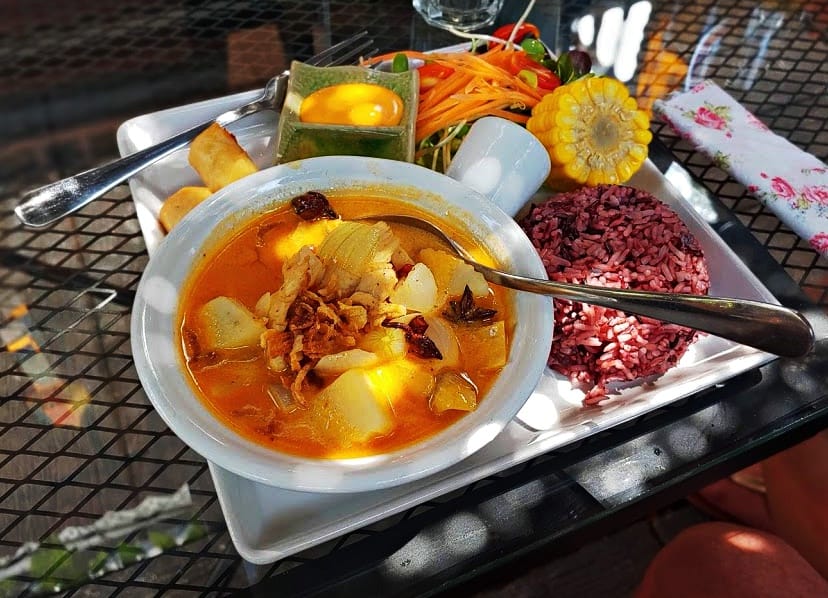
The onsite Baan (“house” in Thai) Buri Cafe and Restaurant serves an all natural/organic menu. Everything from smoothies to herbal drinks to set meals to Chiang Mai local recipes.
The included light breakfast bar served homemade yogurt, juices, fruit, assorted breads and a couple main dishes that were different each day. Everything we ate here was exceptional.
We paid 2,700 THB or $85 a night on Booking.com
Baan 88
I chose to be a little more adventurous for the last night. We took about a half an hour drive north of the city center on the main highway and into an array of small soi’s “alleys” in a residential area of Mae Rim.
Finally, coming to Baan 88, this little Lanna style resort facing the Ping River. Baan 88 is a wonderful place to be and feel relaxed. Just listening to the jungle at night was a great experience in itself. I can’t believe we only had one night here.
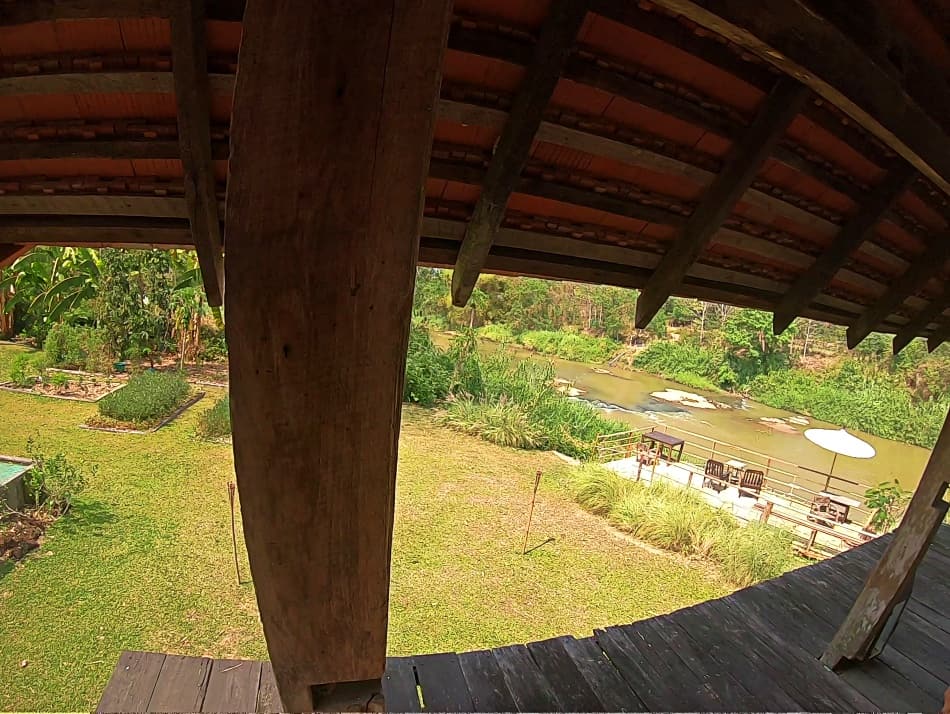
The “tree house” overlooking the Ping River, the bamboo dock down the hill over the river and the room were all beautiful.
The host was great and “unbelievably” offered to get up at 4 am to make us breakfast before we left for our early flight. I almost had to beg her not to as I would have felt bad if she did. She obliged and didn’t make us breakfast but she did get up to see us off.
We paid 1,600 THB or $50 on Booking.com.
Day 1: Explore within the walls of the Old City.
The minute you start walking around the old city, you will start to feel a little different. There is just something about the vibes here that differ from other cities in Thailand.
You can feel the culture, the history, the cultivation of the past with the present and with the future. The tree lined lanes and soi’s seem to be asking to be explored here, as if they are calling you.
So, get that little map out you got from your hotel and explore till your heart’s content, and let’s go hear what they are saying.
Temples or (“Wats” in Thai).
Chiang Mai has over 300 Buddhist temples in the area to choose from. So you won’t have a hard time finding several that suit your fancy. This is the one that did just that for me.
In my opinion, the ancient Wat Chedi Luang is a must see. It was founded in 1401 and it has a lanna style chedi “mound like structure” at the top that was partially damaged by an earthquake in the 16th century. The structure is 82 m or 270 ft high and 54 m or 177 ft in diameter and was the largest structure in Lanna at the time.

The grounds hold more pavilions with Buddha statues and, Wat Chedi Luang hosts monk chats every day. Tourists are welcomed to speak with monks and ask them about Buddhism and Thailand.
Make sure you are respectful and dress appropriately as these are working temples.
Tha Pae Gate.
When Chiang Mai succeeded Chiang Rai as the capital of Lanna, King Pha Yu enlarged and fortified the city. The city was surrounded by a moat and a defensive wall because the Tangoo Kingdom of the Bamar people of Myanmar were a constant threat.

Visiting the ancient Tha Pae Gate, brick wall and moat, will give you a sense of Chiang Mai’s distant past. Most of the wall is gone but the parts that are there, along with the Tha Pae Gate and moat, are a reminder of what once was.
More to See.
Strolling around the old city, you can visit the Chiang Mai Arts and Cultural Center, The Three Kings Monument, the four corners of the ancient wall called “Jang Hua Rin”, “Jang Sripoom”, “Jang Ka Tum” and “Jang Ku Heung”, along with four more historical gates.
Good Eats and Shopping.
The old city has an abundance of restaurants and cafes as well as spas and galleries. If you are there on Sunday there is the Sunday walking street that spans the entire length of Ratchadamnoen rd. From mid afternoon till late evening, the local Thai’s gather there to sell their goods.
Finding a late lunch at the market will not be a problem as the cafes and bars are all open and even the Temples front yards are opened up as food courts as well. Select your dishes from vendors and pop in and sit on the mats on the ground or low benches to eat.
Time for a home cooked Thai dinner?
Here I was, sitting in our room waiting for dinner time. Thanya told me we were meeting some of her childhood friends at a restaurant for dinner. Finally, our Uber driver was here and we were on our way. Working our way through the streets of the old city, we seemed to be more and more deep into a residential area.
Were we lost?
“Hmm, is the driver lost”? I thought. When the driver came to a dead end of a soi, I thought my intuition correct. He mumbled and proceeded to turn the car around. As we came back out of the soi and backtracked one soi over, we were still not out of the residential area. We turned left and there I was, in my very own episode of Anthony Bourdain’s “No Reservations”.
We pull up to a lime green house with white fluorescent lighting everywhere. The middle of the house was an open air courtyard with locals eating at the tattered tables scattered around.
Someone speaking Thai comes running up to my wife and my wife responds in the like. We are then ushered through a sliding glass door to a room with the same lighting and lime green walls. “Well” I said to myself “Let’s see how this goes”.
Conclusion?
To make a long story short, the food was great and the said company was great. The ambiance not so great. The place is called “Aunty Chickens”. Named after the lady who owns the house/restaurant.
Now I know some of you might say I am being posh or something, but I just hate white fluorescent lighting no matter where it is. It washes everything out and makes for a dreary feel. It screams at me like a, well, I don’t know, it screams at me!
Lets also face the fact that I was under the impression that we were meeting at a traditional restaurant. Thanya didn’t say we were meeting at a place where a lady cooks at her house.
Overall it was a good experience and I can now unofficially say I was in an episode of “No Reservations”, “Aunty Chickens Episode”.
It’s all good.
Day 2: Outside the Old City.
Spend Some Time With Elephants (“Chang” in Thai).
Go to the “Happy Elephant Home”! I can’t stress this enough! I will remember this experience for the rest of my life. This is nothing like going to the zoo. You will hang out with several Chang for half a day or a full day depending on what package you choose.
At first you will feel a little intimidated as you walk up to these amazing creatures. But after a few minutes of seeing how graceful and peaceful they really are, you start to feel a connection with them.
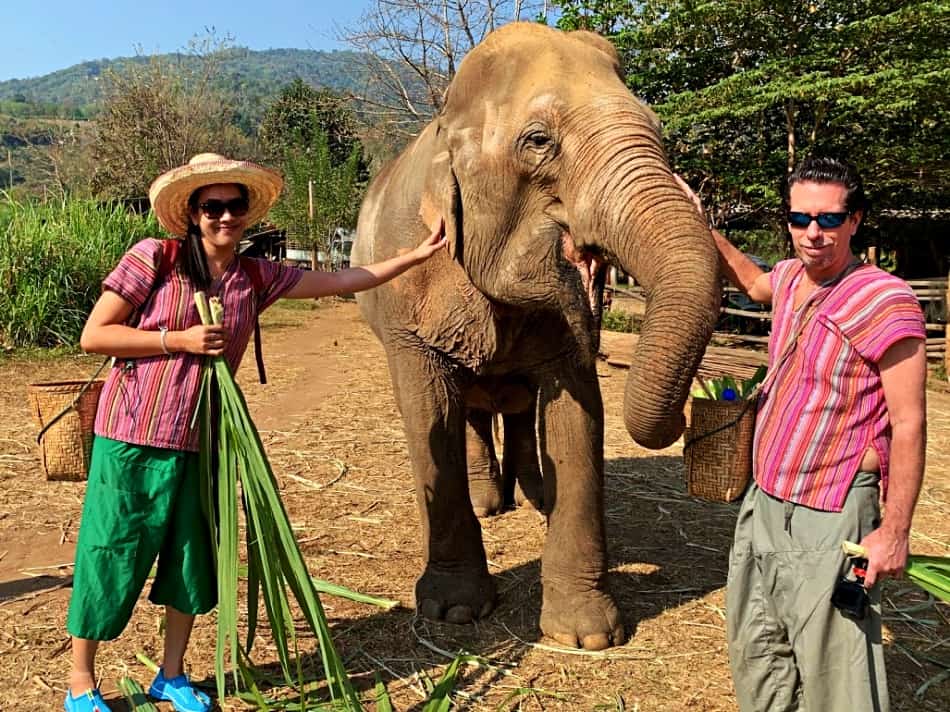
You will spend some time feeding them and then you will walk with them down the Chang path to the river. While at the river, you can join them in the water and splash and swim. Depending on the package you might also play in the Chang mud bath with them.
The people that run this sanctuary are so down to earth and friendly. As they walk with you, they talk about the Chang, the sanctuary and what it is all about.
Next, you will walk back up the path with them and say your good buys. You can clean up, change back into regular clothes and eat an excellent Thai lunch prepared by the sanctuary staff.
The half day morning package is what we chose. Including travel, it still took about six hours, so be prepared to be a little worn out.
Night Bazaar.
After a little rest from playing with the elephants you can head out to the Night Bazaar and do some shopping, eating and have a few cocktails or beers.
All the permanent shops at the plaza are open during the day and night. All the other local vendors come in at night and set up shop to sell their goods. You can find just about anything there. From clothing to hand crafts to paintings and on and on and on.
We walked around the bazaar looking at all the goods for a while and decided it was time for a beer or two. We spotted an upstairs bar/restaurant with a balcony across from the Mcd’s and Seven 11. So up we went to relax and watch the Night Bazaar from the balcony.

The Night Bazaar at The Plaza is open every night and is just east of the Tha Pae Gate outside the old city. You could walk there if you are staying near the east side but it is a little bit of a trek from the west side.
Just hop on a tuk tuk(three wheel bike) or a songthaew (red open back pickup truck). You can cruise there for about 20-60 THB or .65 cents-$1.90. Yes! You read correctly.
To flag one down, stand on the side of the road in the direction you want to go and some will honk when they see you. Either way just put up your hand and they will stop. If they don’t honk or stop, they are either full or privately hired. Tell the driver the place you want to go and they will tell you the fair.
Day 3: Chiang Mai’s “Temple on the Mountain”.
Wat Phra That Doi Suthep.
We moved just north of the city to the Baan 88 resort in Mae Rim on our last day. For this day in Chiang Mai, we borrowed Thanya’s sisters car.
Driving to Chiang Mai’s most sacred temple, “Wat Phra That Doi Suthep” was a little more convenient than depending on the songthaew. Besides, we were staying outside the city and needed to get to the airport early the next morning.
Wat Phra That Doi Suthep is located 15 kl or 9 miles from the city of Chiang Mai. Through winding curves going up Doi Suthep mountain, you can feel the air getting cooler. The jungle is all around you and the views of Chiang Mai are wonderful.
Arriving at a little community that reminded me of a little ski town, the Temple is even further up the mountain. Here, it’s time to make a choice. Climb the 309 steps up to the temple? Or take the tram? We opted for both, so we went up on the tram and came down the 309 steps.

The original gold plated chedi towering 24 meters or 79 feet, is the most holy area of the temple grounds. The site also has pagodas, statues, bells, a museum and shrines. Aspects of the temple draw from both Buddhism and Hinduism.
It is fair to say you will need around 2.5 hours for driving and visiting the temple. Especially if you arrive in the morning to escape the bigger crowds.
Chiang Mai Grand Canyon.
Chiang Mai is only missing one thing that southern Thailand has. Beeches. But, Chiang Mai has a grand canyon. This little gem was formerly a quarry that was turned into a water park in 2014.
The canyon is separated into two parks with separate entrances and fees. One side is simply the grand canyon and the other is grand canyon water park. The grand canyon side is mainly for cliff jumping and swimming and the water park side is full of inflatables for climbing on and jumping off of.
Safety is not a big issue as the water here is very deep and there are lifeguards on the lookout at all times. Free life jackets are also available.
There is a restaurant and some food stalls on site, so not to worry about lunch either. The restaurant serves western and Thai food as well as beer and wine.
I’d say 3-4 hours here is more than enough for most people. It can be pretty demanding and wear you out quickly with all the activities. Getting there is about a 40 minute drive south west from the old city so plan on at least 5 hours.
Time for your last dinner in Chiang Mai.
Okay, you wore yourself out again, so it is time for a century old Lanna Thai tradition, “Khan toke”. A khan toke is a pedestal tray used as a small dining table by the Lanna people of northern Thailand. It is a short round table with several legs made from wood.
The Khum Khantoke restaurant dinner and a show is a great place to experience this tradition. Sit at the outdoor pavilion and watch the live show on the center stage of the hall. Elaborate costumes and music accompany the dances. There are ten parts to the Lanna dance show throughout the dinner.
I ordered the vegetarian menu and was immediately blown away. They bring out this round tray with eight bowls on it. Each bowl is stuffed with different menu items.
I still can’t believe it was all vegetarian even though it was all the same items found on the regular menu. Oh, and did I mention it is all you can eat? Not that you would be able to eat it all in the first place.

As the dinner winds down, out comes a plateful of fresh fruit. The show comes to an end.
This type of dinner and a show is a scheduled event and should be booked at least a few hours or more beforehand.
After thoughts.
I haven’t even scratched the surface of things to see and do in Chiang Mai. Like I said at the start, you would need at least a week or two to really get up close and personal with this northern Thai city.
Plan on making a second trip to Chiang Mai in the future if you are on a limited time frame like I was. I know I will definitely be back for more adventures.
Happy Chiang Mai travels.
